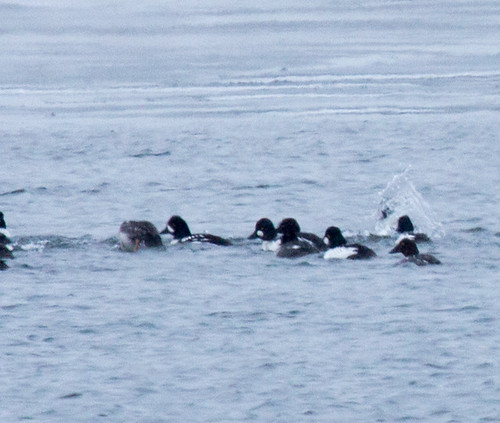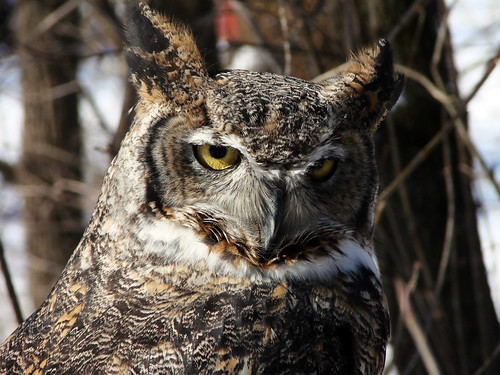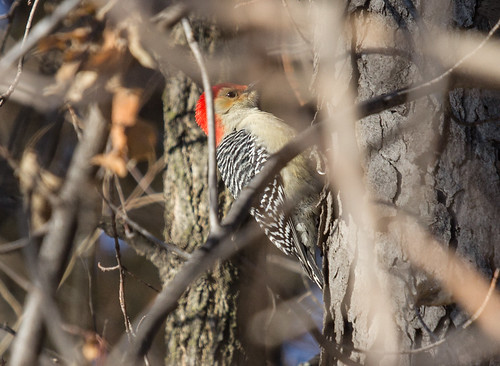 |
| Barrow’s Goldeneye with Common Goldeneyes |
Every year in January I start a new year list. That makes even the most common species exciting for at least a moment, and makes me eager to get out at least once or twice to the Sax-Zim Bog, Port Wing, Wisconsin, and other favorite birding places so my year list doesn’t look too pitiful before the big migration hits each spring.
This year I’m trying to see as many species as I can, so I’ve been out a lot more than usual. So far I haven’t seen the Varied Thrushes that have been in Duluth—Janet Riegle and I saw one the day of the Christmas Bird Count in December, but the three times I looked there starting on New Year’s Day, I couldn’t find it. And I went to Wisconsin Point three times in search of a Barrow’s Goldeneye that has been hanging out with Common Goldeneyes in the Superior Entry, but kept getting skunked on that, too. When I left home on January 13 for my long drive to Florida, I had 47 species.
But since I was driving past Moccasin Mike Road anyway, I decided to make one last try for the goldeneye. The sky was dark and snow flurries made visibility poor, but I lucked out—Mike Hendrickson showed up with his spotting scope, and there it was! It started out on the Minnesota side, then a bunch of them took off and flew across to a little inlet on the Wisconsin side, and then it made its way back to the Minnesota side, so I got to count it for both states. I’d seen one once before in Minnesota, in 2001, but needed it for my Wisconsin list, so this was very exciting.
I saw my lifer Barrow’s Goldeneye in Yellowstone National Park in August 1979, and I saw several in Alaska in August 2001. These sightings make a lot of sense: Barrow’s Goldeneye was once referred to as the Rocky Mountain Goldeneye because it’s generally restricted to areas west of the Continental Divide. But satellite telemetry revealed an important breeding location in the forested regions of the Laurentian Highlands in southeastern Québec—this population may explain why small numbers are found every year in winter in the eastern Canadian Maritime Provinces and eastern United States.
Barrow’s Goldeneye is not listed as a species of conservation concern, but may well deserve to be. The entire world population numbers less than 200,000, so the conservation status is currently being reevaluated. This cavity nester is dependent on holes excavated by Pileated Woodpeckers or flicker holes that have been enlarged by mammals, cavities formed by broken branches, or the hollow tops of standing trees—they’ve also been known to nest in old crow nests and a marmot burrow. They’re surprisingly long-lived. One male was shot by a hunter when at least 15 years old, and another was reported to have lived over 18 years in the wild.
Spotting the lone male among the 600 or so Common Goldeneyes is like looking for a needle in a haystack or, as Mike Hendrickson said when we were looking for him, like “Where’s Waldo?” And like finding Waldo at last, getting a glimpse of this visitor from the North gave me a feeling of genuine satisfaction.
A female Lesser Scaup was also in the Superior Entry.
I searched but didn’t see a single Red-tailed Hawk before dark on my drive to Chicago–the cold and constant flurries may have kept them in more sheltered spots for the day. So I ended the day with a total of 49 species. Today I drove 342 miles.
- Lesser Scaup
- Barrow’s Goldeneye




